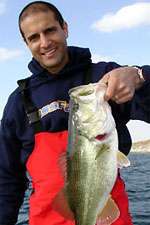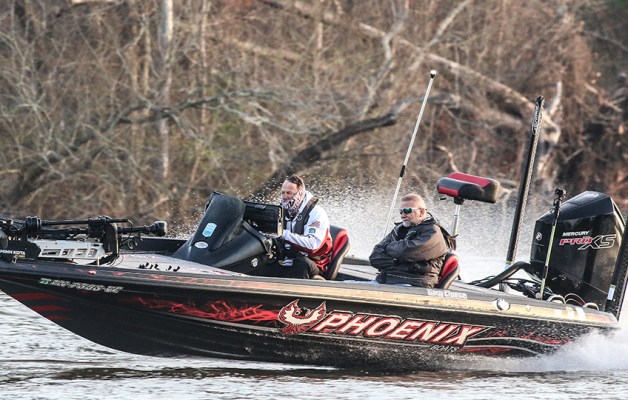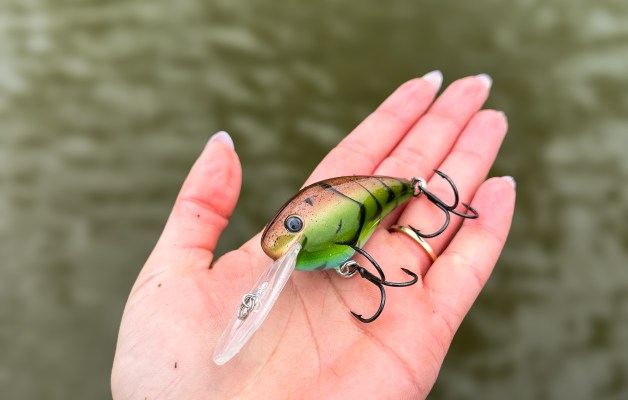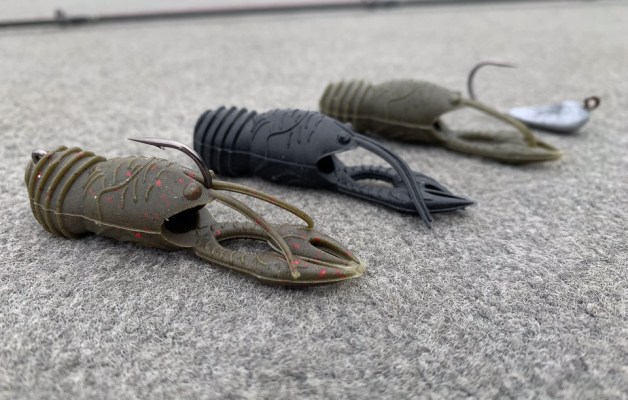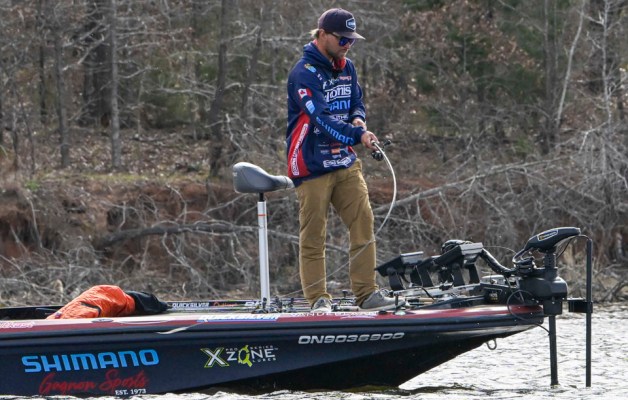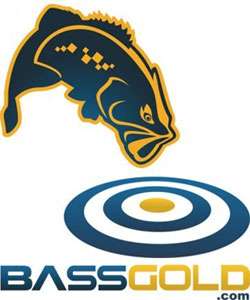
New York’s Oneida Lake is a great place to end the Elite Series regular season because the lake has a ton of fish that can be caught many different ways. That means every fisherman in the tournament has a shot at winning it.
If you want to fish deep or shallow, largies or smallies, you can do it and have a legitimate shot at winning. Sort of.
In other words, in some ways Oneida is like another well-known northeastern tournament lake: Champlain. Same species mix, same multiple opportunities to catch them, even the same lake type – what BassGold calls a “natural lake/river.” Not only that, but if you know how to fish Champlain, you pretty much know how to fish Oneida because it’s the same lake type.
Anyhow, it’s a well-known fact that major tournaments at Champlain are won with largemouths exclusively or at least in the mix. Same deal at Oneida. Jeff Kriet (in 2009) and Kevin Langill (in 2008) both finished second there targeting smallies only. But, so far, no smallie-only wins there for major tournaments.
Macro Factors
The Macro Factors bar graph on a BassGold “Pattern Report” for this time of year at Oneida shows that wins and second to fifth place finishes are pretty evenly divided between “Shoreline” and “Main Lake Offshore Structure.” As Hall of Famer and pattern guru Ken Cook, who tied for fourth at Oneida in 2006, notes, “That translates pretty directly to largemouths or smallmouths.”
He advises Elite anglers to “pick your poison. Fish for brown or green fish and make it work for you.”
But before you do that, consider two things. One is that the pattern details in BassGold show winners have fished only or mostly for largemouths. (You also learn cool things like how Tommy Biffle flipped undercut banks in his 2006 win and that when Dave Wolak tied Ken in 2006 he was fishing for largies suspended under vegetation in deeper water.)
Another thing to consider is that manipulating the Macro Factors graph to remove second-fifth finishes shows that “Shoreline” is involved in most wins. In other words, largies.
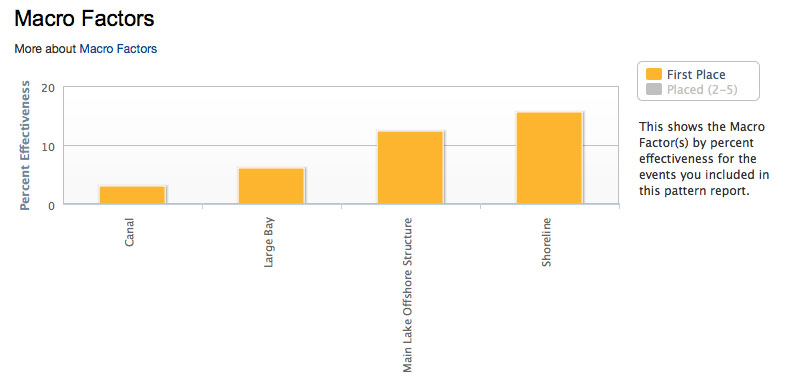
Habitat Factors
“Grass, grass or grass – these are your choices of Habitat Factor,” Ken says, looking at the Habitat Factors bar graph. “Maybe some wood, docks or other stuff if you’re plying the shoreline for largemouths, but ‘submergent veg’ is pretty much everywhere. Smallmouths prefer the more scattered stuff while largies are hanging out under thicker canopies.”
Another way to say this is that if you’re fishing shallow for largemouths, they have been found around cover other than just vegetation, so don’t omit that from the mix.
Baits
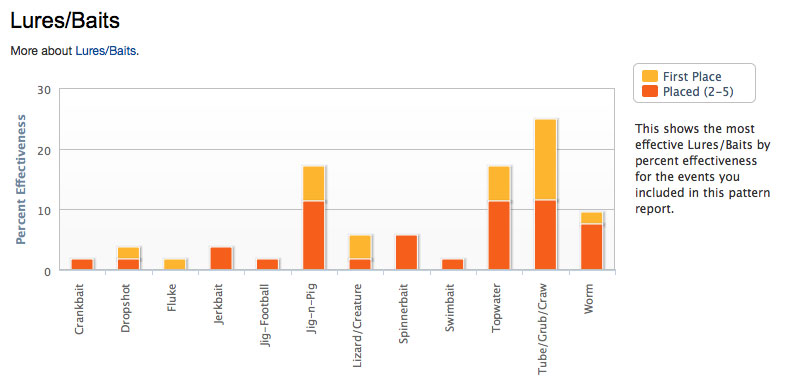
This is interesting. Winners and second to fifth place finishers, no matter what species they’re fishing for, mostly use baits in the “tube/grub/craw” category, with topwaters and jigs tied for second-most-used. Reading through the pattern reports, that probably could be narrowed even further to tubes (deep and flipping), flipping craws, frogs and jigs.
Other baits have been used successfully, as is always the case. But this fact points to either committing to a pretty narrow bait selection, or looking for opportunities to use baits other fishermen won’t be throwing.
Fun Factor
The “fun factor” of fishing Oneida has to be considered. The positives are a lot of fish, bass in literally almost every depth in the water column, and a lot of bites. But those are also the negatives.
Some guys will get caught up in the smallmouths. In prior tournaments, top finishers caught 300 or 400 fish – literally. That’s tough for any fisherman to run away from. Ken says, “I know from experience that the schools of big smallmouths can be located just about any place on this lake.”
Would you rather do that or count on fewer bites from shallow largies? If history is any indicator, the only sure bet in terms of winning is catching them large and shallow, at least part of the time.
Weight
BassGold’s “Weights by Month” graph for Oneida shows average daily weights for first to fifth place finishes in the same range, the mid to high teens. Looks like the weights are a little lower in August than July, but that’s the range.
Depending on current conditions, the winning weight should be around 68 pounds max. But these are the Elites, the best, so you never know!
With a database of more than 4,000 tournament patterns covering hundreds of lakes, BassGold.com – a B.A.S.S. partner – is the ultimate bass patterning tool. Right now, you can get $5 off the BassGold.com annual registration price when you click here and use code BFB001 when you sign up. Don’t forget to use the code! Note that BassGold offers a three-day free trial.

